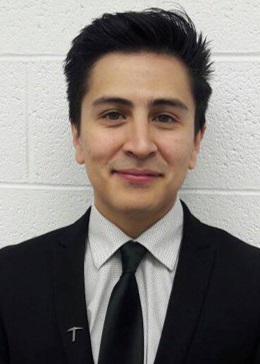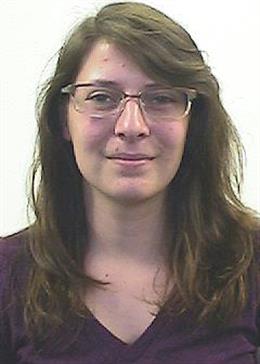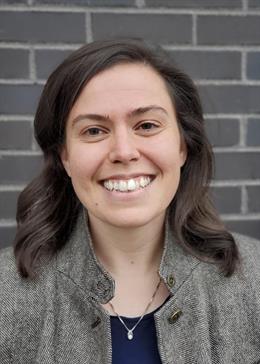2020 – 2021 RNA Scholars

Roberto Castro-Gutierrez
Project Title: Altered translational start site usage as a source of neoantigen formation in type 1 diabetes
Program: Molecular Biology
Mentor: Holger Russ
My research focuses on understanding how altered mRNA translational start site (TSS) usage could lead to neoantigen formation. Cellular stress, such as inflammation, can lead to altered protein translation from non-canonical and out-of-frame start sites from mRNAs. However, the role of the neoantigens and protein products resulting from these events have not been fully characterized. Importantly, there is no central immune tolerance present for neoantigens formed by altered translation, potentially providing a novel mechanism leading to autoimmune diseases such as Type 1 diabetes (T1D). I will employ cell type specific RiboTag profiling of human cadaveric beta cells and stem cell derived functional human beta cells with and without Harringtonin treatment in order to identify global TSS usage under healthy and diabetic conditions. Results from these experiments will provide detailed understanding of TSS usage in human beta cells and will potentially identify neoantigens produced in human beta cells that may serve as key elements in T1D etiology. As such, I will provide novel information that may serve as critical biomarkers for diabetes onset diagnosis and broadly advance our understanding of T1D development in humans.

Raeann Goering
Project Title: Conserved mechanisms of RNA localization
Program: Molecular Biology
Mentor: Matthew Taliaferro
I study the conserved mechanisms of RNA localization across several species and cell types in the Taliaferro Lab. Similar classes of RNAs are localized to various sub-cellular regions however we do not know what proteins mediate this transport or what RNA sequences they may recognize. Ribosomal Protein mRNAs share a highly conserved 5'TOP motif in their 5'UTRs that could play a role in a conserved mechanism for RNA localization. I aim to identify the RNA binding proteins that mediate 5'TOP motif dependent localization in intestinal epithelia and neuronal cells.

Divya Kolakada
Project Title: Determining how sequence context influences the fates of nonsense mediated mRNA decay substrates
Program: Molecular Biology
Mentor: Suja Jagannathan
Nonsense Mediated mRNA Decay (NMD) is a cellular quality control mechanism that targets transcripts containing premature termination codons (PTCs) for degradation. This mechanism exists to protect cells from potential detrimental effects of truncated proteins. However, the process is not 100% efficient: PTC-containing transcripts can escape NMD and remain robustly expressed within the cell. The protein output from these transcripts is variable, i.e., they could produce truncated proteins or could be readthrough, producing a full-length protein with a non-cognate amino acid. My project focuses on understanding how sequence context influences the fate of NMD substrates and their protein output. Understanding this relationship could provide novel therapeutic avenues for Mendelian diseases associated with PTCs.

Nicole Moss
Project Title: RNA regulation in the pancreatic β cell
Program: Cell Biology, Stem Cells and Development
Mentor: Lori Sussel
I am fundamentally interested in how changes at the level of mRNAs can modify cellular functions. Recent studies by our lab and others have demonstrated an important role for RNA modifications and alternative splicing in pancreatic endocrine cell function and the pathophysiology of diabetes. My thesis work examines these changes through the lens of the RNA-binding protein Rbfox2. The conditional loss of Rbfox2 from pancreatic progenitors results in dysregulation of glucose stimulated insulin secretion from the pancreatic β cell. More specifically, I observe changes in alternative splicing and decreased expression of several key β cell functional genes and transcriptions factors. My research will elucidate the direct targets of Rbfox2 in the β cell that regulate glucose stimulated insulin secretion. Additionally, my project will provide insight into the evolution of Rbfox2 function by comparing Rbfox2 direct targets in β cells versus neurons. These two cell types develop from distinct cell lineages but share many gene regulatory networks and have some functional similarities (exocytosis insulin and neurotransmitters). Through this work I will uncover both the conserved and novel molecular events regulated by Rbfox2 and their contribution to β cell physiological and pathophysiological processes.

Matthew Szucs
Project Title: Structure and function of the class 2 xrRNA in the context of the Powassan virus 3' untranslated region
Program: Microbiology
Mentor: Jeffrey Kieft
My project investigates the Class 2 exoribonuclease resistant RNA (xrRNA) found in the 3’ untranslated region of the tick borne flavivirus Powassan virus (POWV). During a flaviviral infection, noncoding RNAs (ncRNAs) derived from a portion of the 3’ untranslated region (UTR) are formed through the partial degradation of the viral genome by the host 5’->3’ exoribonuclease Xrn1. These ncRNAs, called subgenomic flaviviral RNA, are important for viral pathogenesis and evasion of host/vector immune responses. XrRNA are responsible for halting Xrn1 from degrading through the 3’UTR of the viral genome. Currently we only have cursory knowledge of the Class 2 xrRNA and how they confer Xrn1 resistance. The goal of my project is to use a combination of biochemical, structural, and virological methods to examine the structures of the Class2 xrRNA in the context of the full POWV 3’UTR, while testing the effects of these structures in vitro and the effects on viral pathogenesis.